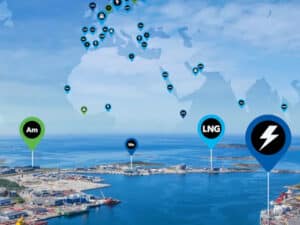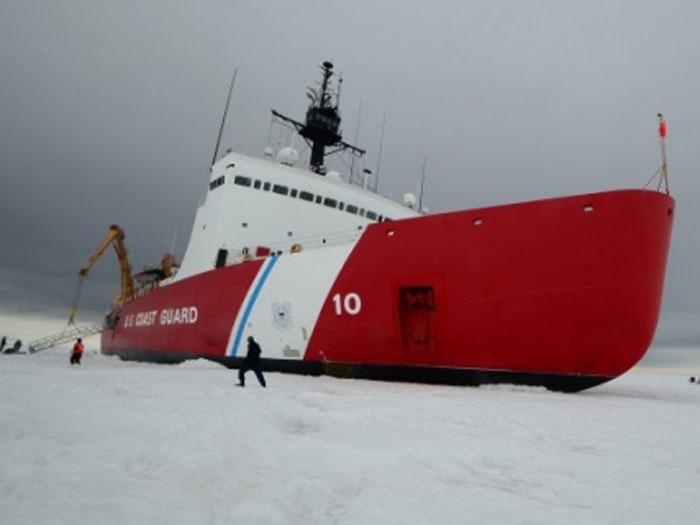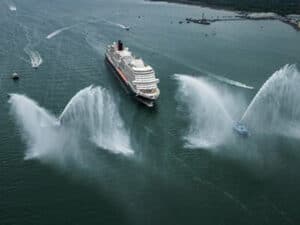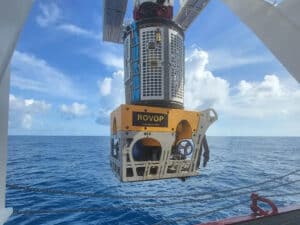
Obama calls for building of new USCG icebreakers
Written by Nick Blenkey
The Coast Guard Cutter Polar Star, a high-endurance icebreaker home-ported in Seattle, sits on the ice in the Ross Sea near Antarctica while underway in support of Operation Deep Freeze 2015
SEPTEMBER 1, 2015 — President Barack Obama, who is on a visit to Alaska, is calling for new Coast Guard icebreakers as part of new investments to enhance safety and security in the changing Arctic.
Those investments could be substantial. A recent Congressional Research Service report estimated that a new polar icebreaker could cost around $900 million to $1 billion. Though the Coast Guard’s need for additional icebreaking capability has long been apparent, efforts to find the massive funding needed have stymied any significant progress. Now the realities of climate change, could give Congress an incentive to come up with an answer.
“Climate change is reshaping the Arctic in profound ways,” says a backgrounder released by the White House today. “The global Arctic has warmed approximately twice as fast as the rest of the world, resulting in significant impacts on land and sea. Among the most noticeable changes is the retreat of Arctic sea ice, which has experienced significant, sustained declines in both extent and thickness in recent decades … As sea-ice cover diminishes because of climate change, marine traffic is expected to increase in the Arctic, including traffic from fishing and mineral exploration to cargo shipping and tourism.”
“Consistent with the priorities laid out in the 2013 National Strategy for the Arctic Region,” says the White House briefing, “today in Seward, Alaska, President Obama will announce new steps to accelerate the acquisition of additional icebreakers to ensure the United States can operate year-round in the Arctic Ocean. In addition, the Obama Administration will announce efforts to enhance scientific observations of the Arctic to increase our understanding of this vital region.”
“
After World War II, the United States Coast Guard had seven icebreakers in its fleet – four under the U.S. Navy and three under the U.S. Coast Guard. Today, the United States technically has three icebreakers in its fleet – all under the command of the U.S. Coast Guard,” says the briefing. “However, when age and reliability are taken into account, the fleet is down to the equivalent of two fully functional icebreakers and only one heavy-duty icebreaker. Russia, on the other hand, has forty icebreakers and another eleven planned or under construction.”
The growth of human activity in the Arctic region will require “highly engaged stewardship” to maintain the open seas necessary for global commerce and scientific research, allow for search and rescue activities, and provide for regional peace and stability. Meeting these challenges requires the United States to develop and maintain capacity for year-round access to greater expanses within polar regions.
The briefing says that the Administration “will propose to accelerate acquisition of a replacement heavy icebreaker to 2020 from 2022, begin planning for construction of additional icebreakers, and call on Congress to work with the Administration to provide sufficient resources to fund these critical investments. These heavy icebreakers will ensure that the United States can meet our national interests, protect and manage our natural resources, and strengthen our international, state, local, and tribal relationships.”
In response to an expected dramatic increase in oceangoing Arctic sea traffic, “National Oceanic and Atmospheric Administration (NOAA) and the U.S. Coast Guard (USCG) will take action to promote safe marine operations and transportation in the Arctic through mapping and charting efforts in the Bering, Chukchi, and Beaufort Seas, regions with newly open waters for which existing maps and charts are nonexistent or outdated. This will include a joint NOAA/USCG survey of a transit route through the Aleutians and Bering Strait, as well as a joint effort among NOAA, USGS, and the State of Alaska to use satellite data for shoreline and near-shoreline coastal mapping, critical to observing climate change in action.
“Additionally, north of Dutch Harbor, located on the Aleutian Chain, there are no deep-water harbors in the U.S. Arctic capable of providing shelter to vessels operating in, or transiting through, the U.S. Arctic region. In February 2015, the U.S. Army Corps of Engineers began a process to evaluate the feasibility of deepening and extend Nome’s harbor capabilities. Such a project could potentially enhance the region’s ability to shelter ships from the Arctic weather and serve as a safe standby location for vessels involved in operations farther north.”





Leave a Reply
You must be logged in to post a comment.